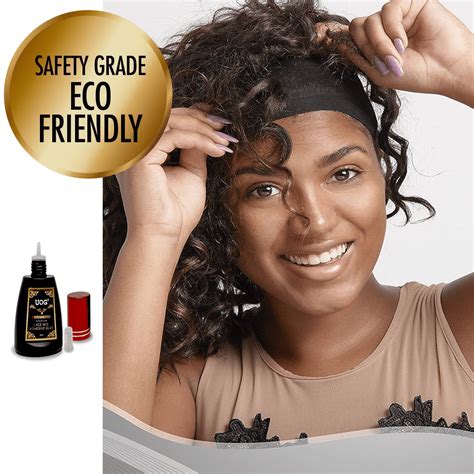
Introduction
Lace wigs have become an indispensable part of the beauty industry, offering versatility, style, and confidence to millions worldwide. However, ensuring a secure and comfortable fit for these wigs requires a suitable adhesive, commonly known as lace wig glue. This comprehensive guide delves into the world of lace wig glue, providing valuable information on its types, application techniques, maintenance tips, and troubleshooting.
Types of Lace Wig Glue
The choice of lace wig glue depends on factors such as skin sensitivity, wig material, and desired hold time. Here are the main types available:
- Water-Based Glues: Ideal for beginners, these glues are gentle on skin and easy to remove. However, they offer a relatively shorter hold time.
- Alcohol-Based Glues: Stronger than water-based glues, these glues provide a longer hold but can be more irritating to sensitive skin.
- Medical-Grade Glues: Designed for sensitive skin, these glues are hypoallergenic and provide a secure hold.
- Silicone-Based Glues: These glues offer a waterproof bond and are popular for use in humid conditions.
Application Techniques
Proper application of lace wig glue is crucial for a successful and comfortable fit. Follow these steps:
- Prepare your skin: Cleanse and dry your hairline. Use rubbing alcohol to remove any oils or residue.
- Trim excess lace: Use scissors to remove any excess lace around the wig’s perimeter.
- Apply a thin layer of glue: Use a cotton swab or small brush to apply a thin layer of glue along the hairline.
- Press the wig onto the hairline: Gently press the wig onto the glue-covered area and hold for a few seconds.
- Smooth the edges: Use a small brush or comb to smooth out any rough edges and ensure a seamless transition.
Maintenance Tips
To maintain the hold and integrity of your lace wig, follow these maintenance tips:
- Avoid excessive sweating: Sweat can weaken the bond between the glue and your skin. Use a headband or sweatband to absorb sweat.
- Protect from heat: Excessive heat can cause the glue to melt or dry out. Avoid prolonged exposure to heat sources.
- Clean the wig regularly: Removing dirt and hair products can prevent buildup on the wig and glue. Use a gentle wig cleaner and conditioner.
- Re-glue as needed: Over time, the hold may weaken. Reapply glue as necessary to maintain a secure fit.
Troubleshooting
If you encounter problems with lace wig glue, consider these troubleshooting tips:
- Wig lifts or slips: The glue may not be strong enough. Try a stronger type or re-apply the glue more frequently.
- Itching or irritation: The glue may be irritating to your skin. Try using a medical-grade glue or applying a barrier cream before applying the glue.
- Glue residue on skin: Use a glue remover specifically designed for lace wigs to safely remove any residue.
- Hairline damage: Excessive use of glue or improper removal can damage your hairline. Follow the application and removal instructions carefully.
Common Mistakes to Avoid
To avoid common pitfalls, keep these mistakes in mind:
- Overapplying glue: Too much glue can create a thick and uncomfortable bond.
- Applying glue to wet hair: Apply glue to dry hair and skin for a stronger hold.
- Using outdated glue: Glue can deteriorate over time. Always use fresh glue for optimal results.
- Neglecting maintenance: Maintaining your lace wig and glue will extend its lifespan and prevent problems.
FAQs
- How long does lace wig glue last? The hold time varies depending on the glue type and individual factors. Generally, water-based glues last around 2-3 days, while alcohol-based and silicone-based glues can last up to 7 days or more.
- Is lace wig glue safe for my skin? Most lace wig glues are safe for skin, but it is always recommended to perform a patch test before using them.
- How do I remove lace wig glue? Use a glue remover specifically designed for lace wigs. Apply the remover to the glued area and let it sit for a few minutes. Gently lift the wig away from your skin.
- What are the benefits of using lace wig glue? Lace wig glue provides a secure and comfortable fit, enhances the appearance of the hairline, and allows for styling versatility.
- Are there any alternatives to lace wig glue? Yes, there are other options such as wig tapes, wig clips, and adjustable bands.
- Can I use hairspray as an alternative to lace wig glue? Hairspray is not a suitable substitute for lace wig glue as it does not provide a strong enough hold.
Conclusion
Lace wig glue is an essential tool for achieving a secure and flawless lace wig fit. By understanding the different types, application techniques, maintenance tips, and troubleshooting advice, you can confidently wear your lace wig with style and comfort. Remember to prioritize skin health and seek professional guidance if needed. Embrace the transformative power of lace wig glue and unlock the endless possibilities of hair styling.
